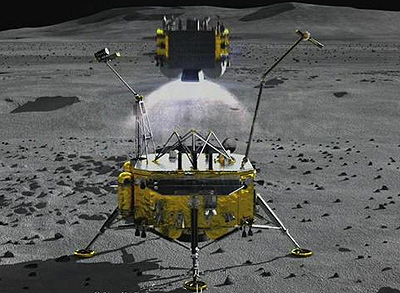
Breaking News
 'Russia Feels It's Being Heard': Trump Advancing Secret 28-Point Plan To End Ukraine War
'Russia Feels It's Being Heard': Trump Advancing Secret 28-Point Plan To End Ukraine War
 The Psychology of Survival: "He Who Hesitates is Lost"
The Psychology of Survival: "He Who Hesitates is Lost"
 Popular Trump Supporter/Respected Financial Expert Eric Bolling Warns That President Trump...
Popular Trump Supporter/Respected Financial Expert Eric Bolling Warns That President Trump...
 The Man Who First Predicted Trump Would Move to Overthrow Venezuelan & Mexican Dictatorships...
The Man Who First Predicted Trump Would Move to Overthrow Venezuelan & Mexican Dictatorships...
Top Tech News
 New Gel Regrows Dental Enamel–Which Humans Cannot Do–and Could Revolutionize Tooth Care
New Gel Regrows Dental Enamel–Which Humans Cannot Do–and Could Revolutionize Tooth Care
 Researchers want to drop lab grown brains into video games
Researchers want to drop lab grown brains into video games
 Scientists achieve breakthrough in Quantum satellite uplink
Scientists achieve breakthrough in Quantum satellite uplink
 Blue Origin New Glenn 2 Next Launch and How Many Launches in 2026 and 2027
Blue Origin New Glenn 2 Next Launch and How Many Launches in 2026 and 2027
 China's thorium reactor aims to fuse power and parity
China's thorium reactor aims to fuse power and parity
 Ancient way to create penicillin, a medicine from ancient era
Ancient way to create penicillin, a medicine from ancient era
 Goodbye, Cavities? Scientists Just Found a Way to Regrow Tooth Enamel
Goodbye, Cavities? Scientists Just Found a Way to Regrow Tooth Enamel
 Scientists Say They've Figured Out How to Transcribe Your Thoughts From an MRI Scan
Scientists Say They've Figured Out How to Transcribe Your Thoughts From an MRI Scan
 Calling Dr. Grok. Can AI Do Better than Your Primary Physician?
Calling Dr. Grok. Can AI Do Better than Your Primary Physician?
China's Chang'E-5 lander finds first onsite evidence of water on the Moon

The fifth lunar mission launched by China and its third lander mission, Chang'E-5 made history on December 17, 2020 when it's ascent stage and the mission's orbiter returned the first lunar samples to Earth since the Soviet Union's Luna 24 mission in 1976.
Though the mission was a success, the lander lacked a radio-thermonuclear unit to keep it warm through the -310 °F (-190 °C) 14-day lunar night during which its electronics froze and failed. However, the information gathered by the mission during the brief surface mission is still returning surprising dividends.
One of these involves something that is more valuable than gold when it comes to future lunar missions and the establishment of permanent human outposts: water. If a large supply of the wet stuff can be secured on the Moon, it will provide future missions with not only a source of drinking water, but also oxygen and hydrogen that can be used to produce air for breathing, rocket fuel, and the raw material for a staggering array of industrial processes.
So far, all of the water detected on the Moon has been from orbiting spacecraft using remote sensing to uncover water ice hiding in the permanent shadows of the lunar south polar region, but the new study that included scientists from the National Space Science Center of CAS, the University of Hawai′i at M?noa, the Shanghai Institute of Technical Physics of CAS, and Nanjing University has found the presence of water in the form of H?O or OH hydroxyl molecules in the Northern Oceanus Procellarum basin much closer to the lunar equator.
The area where Chang'E-5 touched down is a lava plain that is made of some of the youngest mare basalts on the Moon. Using the lunar mineralogical spectrometer (LMS) onboard the lander, mission control carried out spectral analysis of light reflecting off the regolith on the surface and a rock in the vicinity of the lander.

 Unbanked In A Connected World
Unbanked In A Connected World

